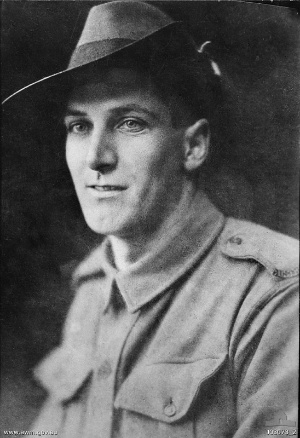
Robert Matthew Beatham, VC was a British-born Australian recipient of the Victoria Cross, the highest award for gallantry "in the face of the enemy" that can be awarded to British and Commonwealth forces. He saw action in the Australian Imperial Force during the First World War and fell at the Battle of Amiens.

Frederick Birks, VC, MM was a Welsh-born Australian First World War soldier and recipient of the Victoria Cross, the highest decoration for gallantry "in the face of the enemy" that can be awarded to members of the British and Commonwealth forces.

Thomas Cooke, VC was a New Zealand-born soldier who served in the Australian Imperial Force during the First World War. He was a recipient of the Victoria Cross, the highest award for gallantry "in the face of the enemy" that can be awarded to personnel of British and Commonwealth forces.

John Leak, VC was an Australian recipient of the Victoria Cross, the highest award for gallantry in battle that could be awarded at that time to a member of the Australian armed forces. Leak enlisted in the Australian Imperial Force in early 1915, and served with the 9th Battalion in the Gallipoli Campaign during the First World War. Evacuated suffering from dysentery, Leak rejoined his battalion after it had been withdrawn to Egypt. Along with his unit, he transferred to the Western Front in France and Belgium, where he participated in the Battle of Pozières in July 1916. He was awarded the Victoria Cross for his actions during the battle. The following month he was seriously wounded in the Battle of Mouquet Farm.
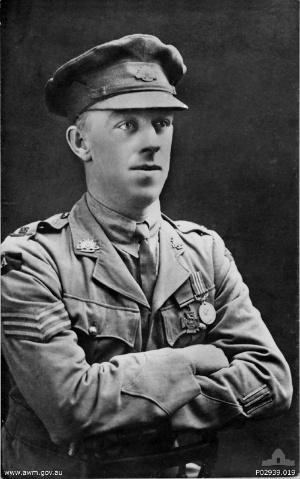
George Julian "Snowy" Howell, VC, MM was an Australian recipient of the Victoria Cross, the highest decoration for gallantry "in the face of the enemy" that can be awarded to members of the British and Commonwealth armed forces. Howell was decorated with the Victoria Cross following his actions during the Second Battle of Bullecourt, in which he ran along the parapet of a trench bombing the German forces attacking his position through the use of grenades, and thus driving them back.
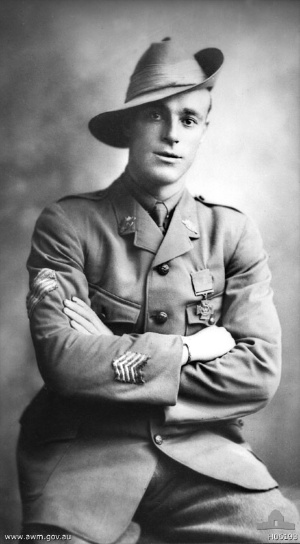
Reginald Roy Inwood, VC was an Australian soldier and recipient of the Victoria Cross, the highest award for gallantry in battle that could be awarded to a member of the Australian armed forces at the time. Inwood enlisted in the Australian Imperial Force in August 1914, and along with the rest of the 10th Battalion, he landed at Anzac Cove, Gallipoli, on 25 April 1915. He fought at Anzac until being evacuated sick to Egypt in September. He remained there until he rejoined his unit on the Western Front in June 1916. In August, he fought in the Battle of Mouquet Farm.
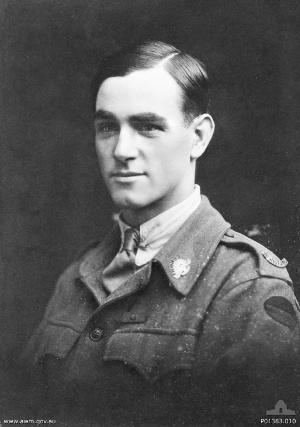
George Cartwright, was a British-born Australian recipient of the Victoria Cross, the highest award for gallantry in the face of the enemy that can be awarded to British and Commonwealth forces. He was one of 64 Australians to receive the award for their actions during the First World War, performing the deeds that led to his award in September 1918 during the Battle of Mont Saint-Quentin while serving with Australian Imperial Force on the Western Front. After the war, Cartwright returned to Australia and worked as a mechanic. He continued to serve in the military part-time, returning to full-time service during the Second World War, undertaking a training role in Australia. He was demobilised in 1946, and returned to civilian life. He died at the age of 83.

John Patrick Hamilton, VC was an Australian recipient of the Victoria Cross, the highest award for gallantry in the face of the enemy that can be awarded to British and Commonwealth forces.
John Henry Lockett was the oldest man ever in Australia when he died aged 111 years, 123 days. As one of the last surviving veterans of World War I, he was acclaimed as a national hero during the last decade of his life.
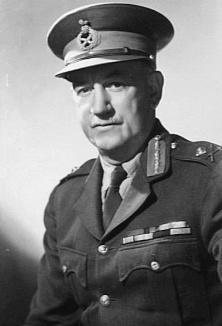
Major General James Harold Cannan, was an Australian Army brigadier general in the First World War and the Quartermaster General during the Second World War.
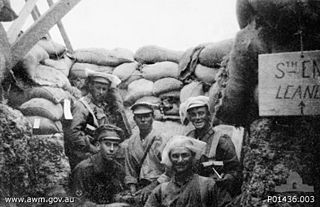
The 12th Battalion was an infantry battalion originally raised for the First Australian Imperial Force during the First World War. The battalion was recruited from Tasmania, South Australia and Western Australia and formed part of the 3rd Brigade, 1st Division. It served throughout the war, firstly during the Gallipoli Campaign and then on the Western Front. During the interwar years, the 12th Battalion was re-raised as a part-time military unit and during the Second World War undertook garrison duties in Australia, but did not see combat. Today its lineage is perpetuated by the 12th/40th Battalion, Royal Tasmania Regiment, a unit which continues to serve in the Australian Army Reserve.

Bob Tidyman (1891–1916) was an Australian rugby league player and soldier who fell in World War I. A national representative winger, his short club career was played with Sydney's Eastern Suburbs club in the years 1912–15. In 1912 he played Second Grade then 1913 to 1915 First Grade.
Walter Parker was an Australian soldier and the third last surviving veteran of the Australian and New Zealand Army Corps (ANZAC) who served in World War I.

Roy Longmore was an Australian soldier and centenarian, who after Alec Campbell, was noted as the second last living Australian and New Zealand Army Corps (ANZAC) veteran who saw service in World War I.

The Wallach brothers were a family of eight boys born to Henry and Mary Wallach of Bondi Beach in Sydney, Australia toward the end of the 19th century. Six of the brothers all saw active service in World War I. The fourth and eighth brothers, Clarrie and Neville were both top-grade rugby union players before the War. They both saw action at Gallipoli, were promoted on the Western Front as Captains, were both recipients of the Military Cross and each fell within a week of each other in France in fighting at the time of the Second Battle of Villers-Bretonneux.

Lieutenant Colonel Charles Hellier Davis Evans, DSO served as commanding officer of the New Zealand Cyclist Corps. A long time member of New Zealand's volunteer forces he enlisted in the New Zealand Expeditionary Force at the outbreak of World War I, and served with distinction on the Western Front. He was awarded the Distinguished Service Order, Mentioned in Despatches, and was one of only 14 members of the New Zealand Army to receive the French Legion of Honour decoration during the war.

Henry Denis Hauenstein, MM was an Australian national representative rower and a World War I infantry officer. He was a three-time Australian national champion rower who competed for Australasia at the 1912 Summer Olympics in the men's eight. He was a member of the Australian men's selection eight which won the Grand Challenge Cup at the Henley Royal Regatta of 1912. He saw active service on the Western Front where he won the Military Medal and was a member of the AIF crew which at war's end, won at the 1919 Peace Regatta and brought the King's Cup to Australia.

Keith Heritage MC was an Australian national champion and representative rower and a 1st AIF officer who fell on the Western Front in WWI. He is credited with being the first Australian to volunteer for the AIF at the outbreak of WWI and as one of the last Australian officers to leave Anzac Cove at the end of the Gallipoli Campaign. As a rower he was twice an Australian national champion and he won the Grand Challenge Cup in an Australian representative eight racing as Sydney Rowing Club at the 1912 Henley Royal Regatta. He saw action in WWI in German New Guinea, Gallipoli and on the Western Front and was awarded the Military Cross.
Thomas McGill MM (1893–1969) was an Australian infantry officer who saw active service in WWI. At war's end he rowed in the AIF #1 eight to victory at the 1919 Henley Peace Regatta and brought the King's Cup to Australia. Post WWI he was a New South Wales state representative rower.












